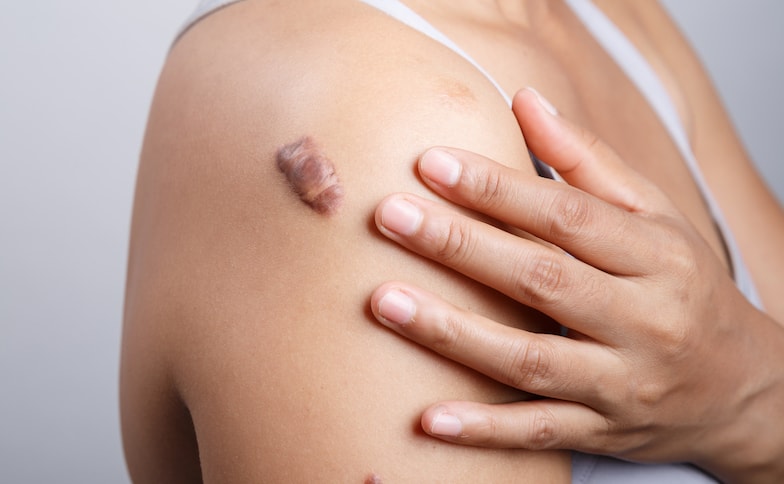What is a keloid scar?
Scarring is a natural part of the skin’s healing process after a wound. Whether the wound has been caused by surgery, a skin condition such as acne, or simply direct damage, the skin will form a scar as it closes the wound.
In most cases, scars are a slightly different colour to that of the surrounding skin, but this fades gradually. Some scars, though, become more raised and inflamed over time. These may be keloid scars (sometimes simply called “keloids”).
How are they caused?
Keloid scars are the result of excessive collagen production in the skin. They most commonly happen after the skin has been subject to physical trauma, including surgery. Some people are genetically more likely to develop keloids.
They are similar in appearance to hypertophic scars, which are scars that are raised slightly from the skin. A keloid scar tends to cause more discomfort to the patient and will often not settle without treatment.
Why are they treated?
Both keloid and hypertophic scars can be considered unsightly by the patient. Keloid scars may also spread beyond the area of the original wound.
Keloid scars may also be itchy or painful, particularly when they are stretched or rubbed by clothing or other forces.
Usually the aim of keloid scar treatment is to reduce their size and the amount of irritation they cause. Surgical removal of the keloids is not usually appropriate (see Treatment).
Diagnosis
Keloid scars are diagnosed visually by a surgeon.
The surgeon will assess whether the scar is hypertrophic or keloid. A keloid scar will display some of these symptoms:
- Growing beyond the area of the original wound
- Raised more than 4mm from the skin
- Irritated, itchy or painful
- Firm to the touch
A history of previous scars, including any keloid scars, will be taken.
Treatment
In most cases a course of steroid injections is prescribed.
The steroid is injected into the keloid scar by a surgeon. This is repeated at intervals of several weeks. Over time the scar will often flatten and become paler in colour, more closely matching the patient’s usual skin tone.
Surgical removal of a keloid scar is not often recommended. In order to excise it, the scar must be removed completely, which leaves a larger wound. This means the skin that is surgically closed to cover the wound is stretched, which increases the chance of a new keloid scar forming.
If specific triggers have been identified that are stretching or rubbing the skin in the area of the scar, the surgeon may suggest changes in clothing or activity in order to support the recovery process.








